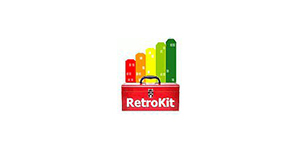Romania, along with the other European countries, has developed and assumed targets to unsubscribe the economy and develop renewable energy sources for domestic consumption. Romania aims to achieve a target of at least 30.7% for renewable energy, of total energy consumption, an increase in energy efficiency by 32.5% in 2030 and a level of 15% interconnection of the electricity market.
Romania will develop additional SRE capacities of approximately 6.9 GW compared to 2015. Building on these premises, Romania decided to develop and implement alternative measures and policies to encourage energy savings. The Long-Term Renovation Strategy adopted in November 2020 provides for significant energy efficiency and CO2 savings, as well as new facilities for photovoltaic systems adapted for existing buildings.
Another interesting provision in the new PNIesC shows that, following a detailed analysis, Romania has decided to develop and implement alternative measures and policies to encourage energy savings, the document also states. In addition, a Long-Term Renovation Strategy Project has been submitted for public consultation, to be adopted by March 2020 (the current renovation scenario provides for significant energy efficiency and CO2 savings, as well as new facilities for SRE-E production facilities, most in the form of photovoltaic panels for existing buildings.
Programmes financed by the AFM
Green House -Photovoltaic systems
Launched in 2019, financed by the Environment Fund and the Regional Operational Programme 2014-2020, the programme aims to support 90% investment expenditure for the installation of photovoltaic panels systems for the production of electricity, in order to cover the consumption needs and the delivery of surplus to the national grid. The amounts allocated in this program 535 million lei cover the level of investment for 26,000 photovoltaic systems with a total power of almost 80 MW. The program is in progress and the stage is an advanced one, specific to the commissioning activities and reimbursement of the amounts by the contracting authority
Photovoltaic systems for isolated households
The aim of the programme is to increase energy efficiency, improve air quality and reduce greenhouse gas emissions by producing electricity from renewable sources at homes at least 2 km from the national electricity distribution network and by reducing the use of conventional fuels. The amounts allocated under this programme carried out through the territorial administrative units, on whose radius are the eligible households, are 230 million lei, corresponding to the 100% financing requirements for almost 1000 systems.
Programme on carrying out work aimed at increasing energy efficiency in single-family dwellings
The object of the programme is to grant non-refundable funding from the Environment Fund to carry out work aimed at increasing energy efficiency in single-family dwellings. The aim of the programme is to increase energy efficiency and reduce greenhouse gas emissions by reducing energy consumption and using renewable sources in single-family homes.
The objectives of the programme are: to increase energy performance and/or the use of renewable energy in existing single-family dwellings located in a building-building with a height regime of no more than 3 levels (example: S/D+P+1E, P+2E or P+1+M).
Under the programme, non-refundable financing of up to 70,000 lei, including VAT for each project, shall be granted, not exceeding 60% of the total eligible expenditure of the investment, for the implementation of measures to increase the energy performance of the building.

Programme on increasing energy efficiency and intelligent energy management in public buildings for educational purposes
The aim of the Programme is to increase the energy efficiency of public buildings for educational purposes and to improve the quality of the environment by reducing greenhouse gas emissions by reducing the annual final energy consumption.
The object of the Programme is to modernise public buildings for educational establishments, by financing activities/actions specific to making investments to increase their energy performance, i.e.:
- improvement of the thermal insulation of the building tyre (outdoor walls, windows and doors, floor above the last level, floor over the basement), slats and coverings; as well as other tyre elements that close the air-conditioned space of the building;
- introduction, rehabilitation and modernisation, as appropriate, of installations for the preparation, distribution and use of heating agent and hot drinking water, ventilation and air conditioning systems, mechanical ventilation systems with heat recovery, including passive cooling systems, as well as the purchase and installation of related equipment and connection to central heating systems, as appropriate;
- the use of renewable energy sources;
- implementation of energy management systems aimed at improving energy efficiency and monitoring energy consumption (e.g. purchase, installation, maintenance and operation of intelligent systems for the management and monitoring of any type of energy to ensure indoor comfort conditions);
Programme on supporting energy efficiency and smart energy management in public lighting infrastructure
The objective of the Programme is to increase the energy efficiency of public lighting systems.
The aim of the Programme is to improve the quality of the environment by reducing greenhouse gas emissions by using LED luminaires that result in high energy efficiency.
The object of the Programme is to modernise public lighting systems by replacing luminaires with high electricity consumption with LED luminaires, as well as the purchase and installation of dimare/telemanagement systems that allow the adjustment of light flow at the level of the entire investment objective.
Funding shall be granted up to a maximum of 90 % of eligible expenditure and within the limits of the amounts which may be granted for each category of applicants. Funding shall be granted according to the category of administrative-territorial unit, as follows:
- a) administrative-territorial unit with a population of up to 4,000 inhabitants – maximum 500,000 lei;
b) administrative-territorial unit with a population of more than 4,001 inhabitants – maximum 1,000,000 lei.








